Many aquascape enthusiasts make it their goal to line the bottom of their tanks with carpeted plants. Virtually every aquascape style can benefit from the striking, natural beauty of a dense carpet of plants. If you’re eager to learn about how to recreate this effect in your tank, you’ve come to the right place!
Creating a beautiful carpet of plants can be difficult to achieve if you’re new to the hobby. However, selecting the right plants is half of the battle! Read on to learn more about the types of aquarium carpet plants we recommend for experts and beginners.
15 Carpet Plants for Hobbyists
With the vast variety of carpeting plants available on the market, it can be difficult to pick one that’s right for you and your tank. The good news is, no matter what your expertise level and preferences may be, there’s a perfect plant for you.
To get you started, here’s a list of 15 carpet plants for hobbyists of all levels – beginners and experts alike!
1. Christmas Moss
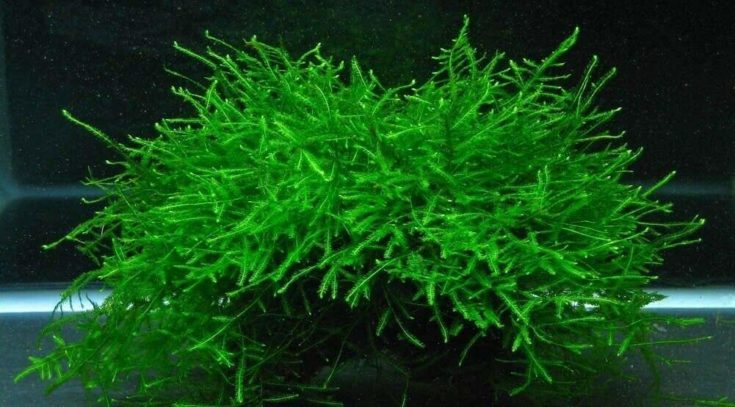
Scientific name: Vesicularia Montagnei
Origin: Southeast Asia
Growth Rate: Slow
Supplemental CO2: Helpful
Light Requirement: Low-to-Medium
Let’s get things rolling with a plant that spreads festive cheer, year-round. Enter the Christmas Moss, aptly named after its leaves which resemble fir trees. Unlike a fir tree, however, this plant grows horizontally rather than vertically. You can expect it to form a carpet or moss wall if left untrimmed!
Although this plant grows rather slowly, it is capable of doing so under a wide variety of conditions. The one thing you will need to take note of is the fact that moss tends to attract algae growth – and algae can be rather difficult to remove. To prevent this from happening in the first place, try exposing your plant to good water flow.
2. Dwarf Water Trumpet
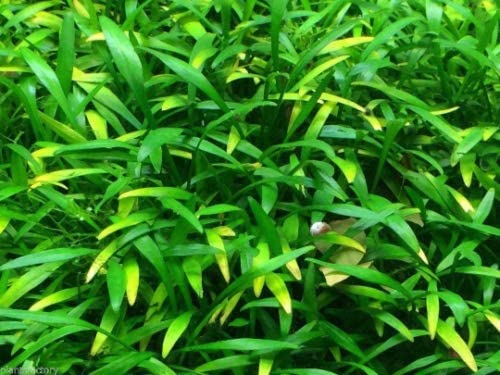
Scientific name: Cryptocoryne Parva
Origin: Sri Lanka
Growth Rate: Very Slow
Supplemental CO2: Optional
Light Requirement: High
For many aquarists, having to prune their plants regularly can feel like a bit of a chore. If this describes your predicament, the slow-growing dwarf water trump is perfect for you! This small plant features oval-shaped leaves arranged in a rosette.
Because of its diminutive size, the dwarf water trumpet is perfect as a foreground plant. If you intend to create a carpeting effect, it is best to start with as many plants as possible as the dwarf water trumpet is a slow grower. If this causes excessive algae growth, consider raising algae-eaters with these plants!
3. Dwarf Hairgrass
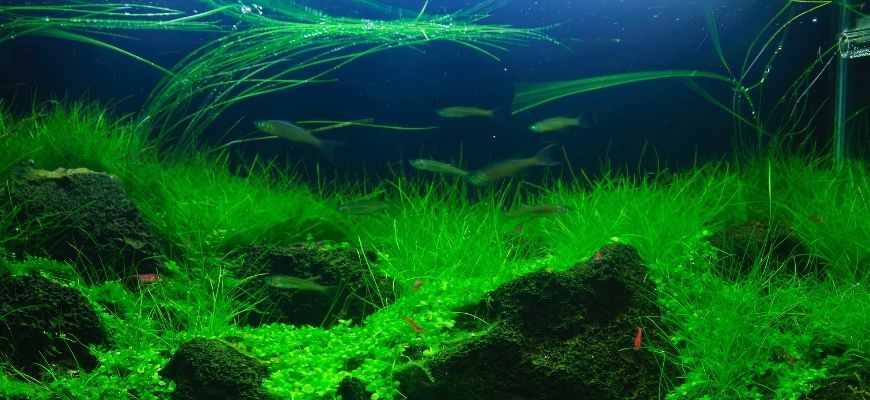
Scientific name: Eleocharis acicularis
Origin: North America
Growth Rate: Fast
Supplemental CO2: Optional
Light Requirement: Moderate
As one would expect, the Dwarf Hairgrass does indeed, look like hair. Each individual leaf is shaped like a delicate blade of grass, allowing it to create a truly breathtaking effect when it is propagated on the floor of the tank. The best part? This hardy plant is perfect for beginners who are dipping their toes into the (figurative and literal) waters of the hobby.
Because the dwarf hairgrass is a fast-growing plant, you may need to trim it frequently to keep it at your desired length. However, this does mean that the plant is great at providing shelter to fish, shrimp, and fry that need it!
4. Micro Sword
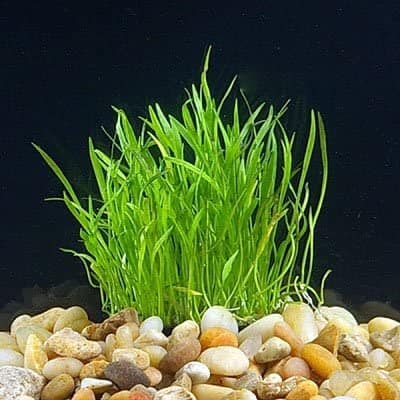
Scientific name: Lilaeopsis brasiliensis
Origin: South America
Growth Rate: Slow
Supplemental CO2: Recommended
Light Requirement: Moderate-to-high
If you’re looking for a plant with remarkable carpeting abilities, the micro sword is for you. Though this plant grows at a rather slow pace, it rewards your patience with a dense carpet that is perfect for dwarf shrimp and fish fry. The lush carpets formed by this plant are also perfect for spawning fish looking for a spot to lay their eggs.
Because these plants grow at a slow-to-moderate pace, many aquarists find it challenging to keep algae growth at bay. To do so, be sure to keep ammonia, nitrate, and nitrite levels at a healthy range. Enlisting the help of algae eaters such as dwarf cherry shrimp may also prove helpful.
5. Dwarf Sagittaria
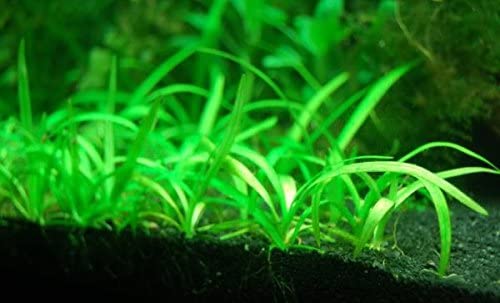
Scientific name: Sagittaria subulata
Origin: South and North America
Growth Rate: Fast
Supplemental CO2: Optional
Light Requirement: Medium
Sometimes known as the awl-leaf arrowhead or the narrow-leaved arrowhead, the dwarf Sagittaria is a hardy, perennial plant species that can grow in a variety of conditions. This plant is so hardy that it has been classified as an invasive species in the United Kingdom.
These plants grow tall and rapidly, so aquarists intending to grow Dwarf Sagittaria in the foreground of their tanks should be prepared to trim the leaves frequently. Otherwise, they make a solid choice for the midground of a tank. Because the Dwarf Sagittaria can be sensitive to low levels of iron, it is best to dose your water with iron supplements.
6. Thai “Little Star” Plant
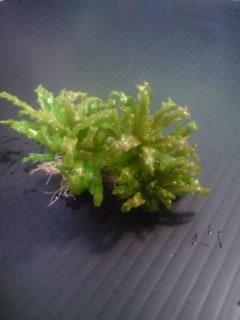
Scientific name: Pogostemon Helferi
Origin: Thailand
Growth Rate: Slow-to-Medium
Supplemental CO2: Optional
Light Requirement: Medium
As one would expect, the Thai “Little Star” Plant truly does resemble a star! It grows in clusters of curled leaves that fan outwards in a star-like shape. As a plant that propagates with runners and side shoots, placing plants in different spots within the tank will quickly allow the plant to form a carpet.
This plant is hardy and capable of tolerating a wide range of water conditions. To keep the plant low and compact, providing 1.5 watts of lighting is recommended. Steer clear of excessive lighting as it promotes algae growth.
7. Java Moss
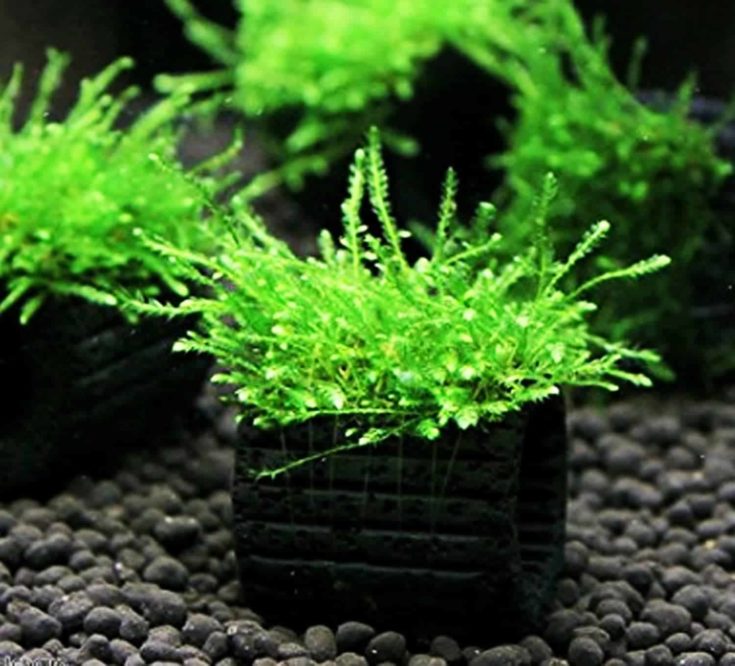
Scientific name: Taxiphyllum Barbieri (formerly Vesicularia dubyana)
Origin: Southeast Asia
Growth Rate: Slow
Supplemental CO2: Optional
Light Requirement: Low
Native to Southeast Asia, Java Moss is a hardy moss that can be spotted growing underwater, or on tree barks, riverbanks, or rocks. Its versatility and ease of growth have made it a mainstay in the hobby, particularly as a mid-to-foreground plant.
Like most types of moss, the Java Moss uses root-like rhizomes to cling onto surfaces, but does not extract nutrients from the substrate. Hobbyists regularly grow java moss on mesh nets, before draping these nets over surfaces in the tank for a decorative effect.
8. Shoreweed
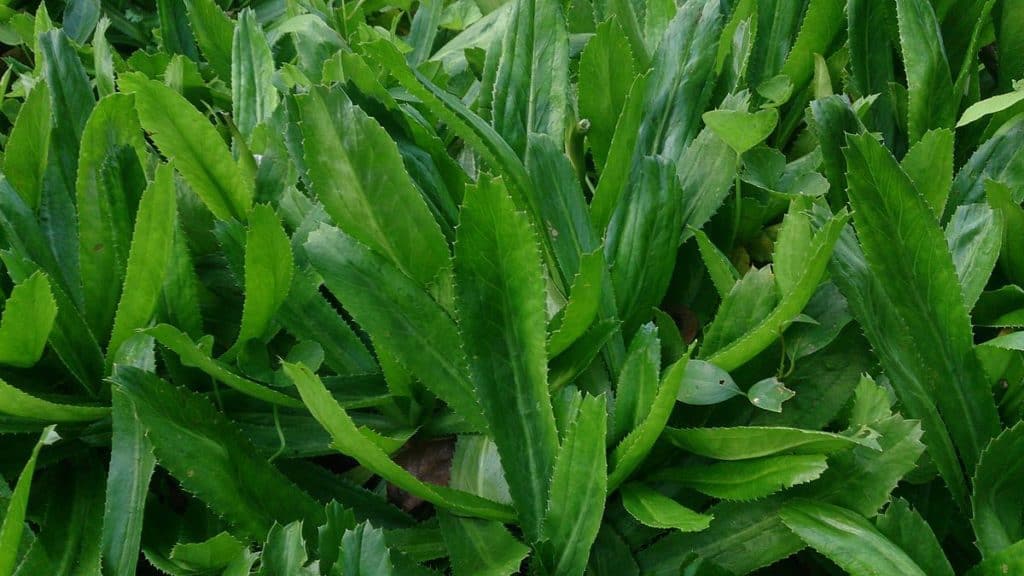
Scientific name: Littorella uniflora
Origin: Indigenous to North America, South America, and Europe
Growth Rate: Slow
Supplemental CO2: Optional
Light Requirement: Low-to-Medium
Shoreweed is yet another grass-like aquatic plant that will thrive in low-tech setups. This plant does not require supplemental CO2 to grow, but will yield rich, bright green-colored plants for the foreground of your aquarium.
Though shoreweed is known to be a flowering plant, it only does so in muddy, shallow water conditions found in the wild. However, these plants remain excellent picks for any tank because they are easy to care for and have a unique appearance.
9. Bamboo Plant
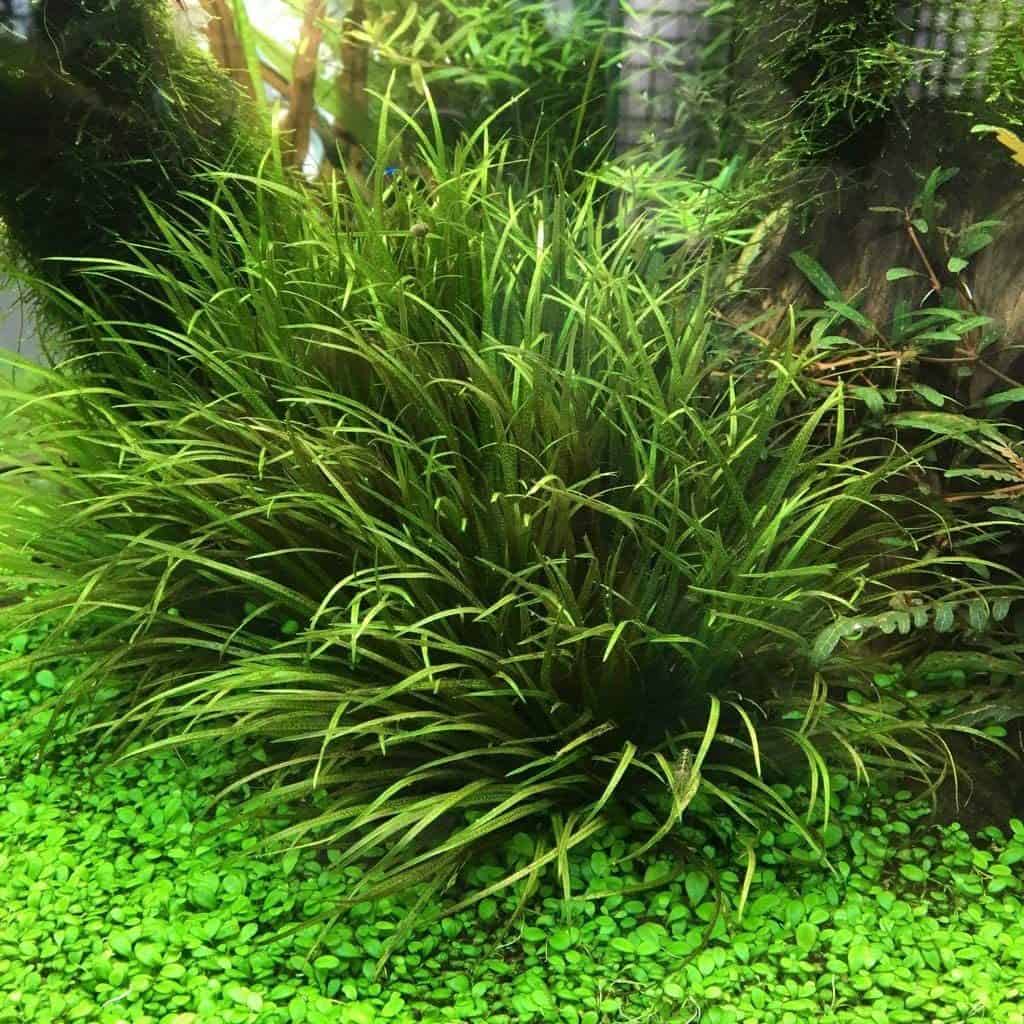
Scientific name: Blyxa Japonica
Origin: Mainland China, Taiwan, Japan, Papua New Guinea
Growth Rate: Modest
Supplemental CO2: Optional
Light Requirement: Low-to-Medium
It’s easy to see why the blyxa japonica is colloquially known as the bamboo plant. Its long, reedy leaves and moderate growth rate makes it a great candidate as a midground plant, acting as a transition between shorter foreground counterparts and the stem plants that are typically placed at the back of a tank.
This is another plant that will tolerate a wide range of lighting conditions. When grown under light shade, they take on a dark green hue. Under bright light, they grow in denser patches, and may appear light red.
10. Monte Carlo
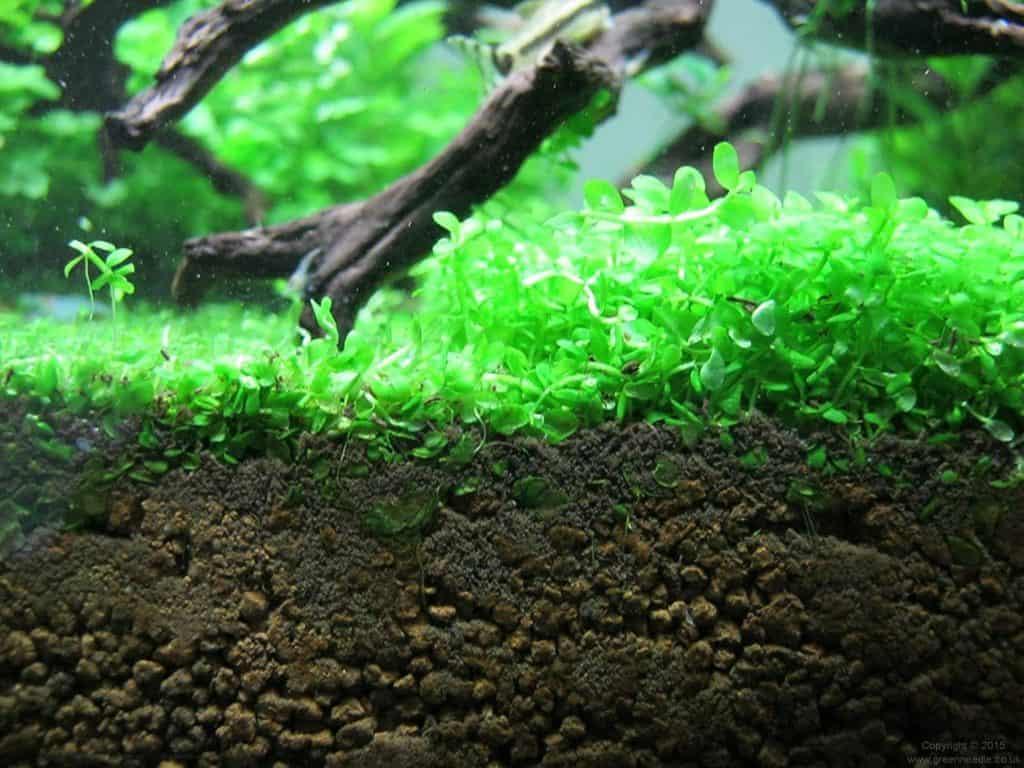
Scientific name: Micranthemum tweediei
Origin: Argentina
Growth Rate: Fast
SupplementalCO2: Optional
Light Requirement: Medium
Originating from Argentina, the Monte Carlo is classified as an easy carpeting plant because it can grow in a wide range of conditions. This plant thrives best in a high-tech aquarium with supplementary carbon dioxide (as most plants do,) but does not require those conditions to flourish.
The Monte Carlo has a reputation for being able to grow under poor lighting conditions. While this is true, we recommend providing it with a medium-to-high amount of light for optimal growth. With the right amount of care, this is a fast-growing plant that will have the floor of your tank looking impressive in no time.
11. Dwarf Baby Tears
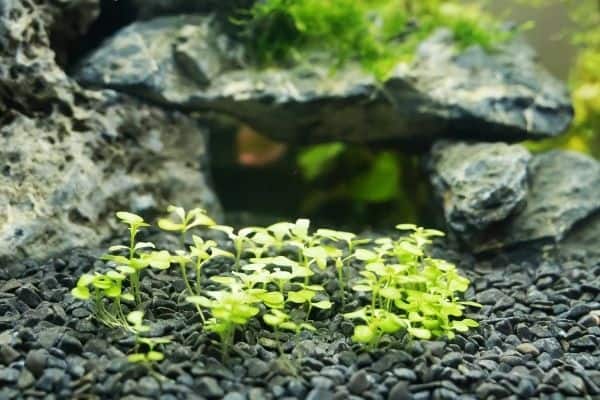
Scientific name: Hemianthus callitrichoides
Origin: The Bahamas, Cuba, Hispaniola, Jamaica, and Puerto Rico
Growth Rate: Slow
Supplemental CO2: Needed
Light Requirement: High
Dwarf baby tears are one of the smallest aquatic plants available, with leaves only growing up to 3/10th of an inch long. Though these plants grow at a relatively slow rate, a single plant can grow up to 3 inches of dense foliage. They are perfect for creating a moss-like carpet on the floor of your tank.
In addition to their aesthetic appeal, dwarf baby tears provide a safe space for spawning fish to lay their eggs. This makes them especially helpful in a spawning tank.
12. Dwarf Water Clover
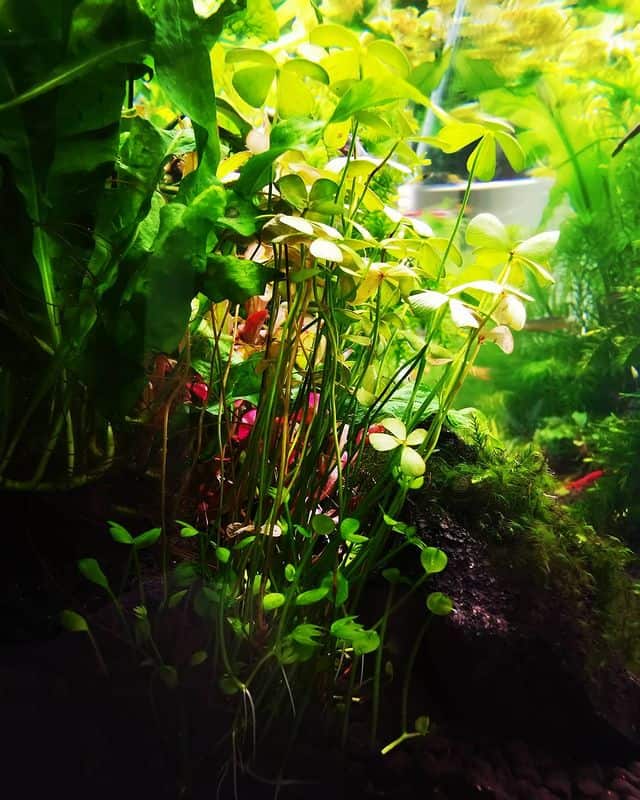
Scientific name: Marsilea minuta
Origin: Africa and Asia
Growth Rate: Medium
Supplemental CO2: Optional
Light Requirement: Medium
Aptly named because it resembles a four-leafed clover, the dwarf water clover is a freshwater perennial plant that’s easy to grow and perfect for beginners. It will grow under a wide variety of conditions: under low lighting, the plants will shoot to the top of the tank in search of sunlight. When given ample lighting, it will flourish as a carpeting plant.
Adding to its versatile qualities, the dwarf water clover also does not require supplemental CO2 to grow. There are several varieties of water clovers within the marsilea family, each with slightly different leaf markings but near-identical growth requirements.
13. Glosso
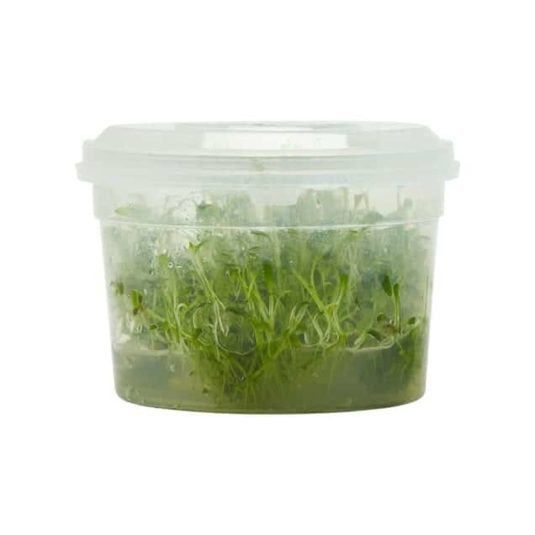
Scientific name: Glossostigma elatinoides
Origin: New Zealand
Growth Rate: Fast
Supplemental CO2: Needed
Light Requirement: Very High
Introduced to aquascapes around the world by Takashi Amano, the glosso is one of the most popular carpet plants among hobbyists. They grow up to 1 inch in height and will spread laterally when grown in areas with lots of light. Be sure to obtain these plants from a good source – a healthy plant is a lot easier to care for!
Glossos require nutrient-rich substrates to thrive. Iron is a particularly important nutrient for this plant, and an iron supplement for your substrate is recommended. When grown under ideal conditions, glossos will grow in dense patches and take on a bright green appearance.
14. Eight-Stamened Waterwort
Scientific name: Elatine hydropiper
Origin: Northern Eurasia
Growth Rate: Medium
Supplemental CO2: Needed
Light Requirement: Moderate
Introduced to aquascapes around the world by Takashi Amano, the glosso is one of the most popular carpet plants among hobbyists. They grow up to 1 inch in height and will spread laterally when grown in areas with lots of light. Be sure to obtain these plants from a good source – a healthy plant is a lot easier to care for!
Glossos require nutrient-rich substrates to thrive. Iron is a particularly important nutrient for this plant, and an iron supplement for your substrate is recommended. When grown under ideal conditions, glossos will grow in dense patches and take on a bright green appearance.
15. Grass-Leaved Bladderwort
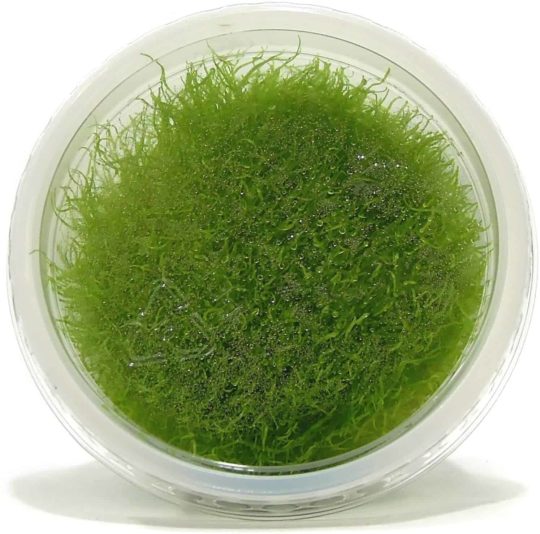
Scientific name: Utricularia Graminifolia
Origin: Asia (Burma, China, India, Sri Lanka, Thailand, Vietnam)
Growth Rate: Moderate to Fast
Supplemental CO2: Optional
Light Requirement: Medium
At first glance, the glass-leaved bladderwort looks just like any other patch of grass. However, appearances can be deceiving. The Utricularia Graminifolia is one of the only plants on our list with carnivorous properties.
While most plants rely entirely on photosynthesis, the grass-leaved bladderwort has evolved to consume tiny crustaceans and other semi-aquatic creatures to meet its nutritional needs. This ability allows them to grow even under the most challenging of circumstances.
Though these plants are notoriously hardy, they will benefit from supplemental CO2 and a well-lit environment.
Why Carpet Plants Are Harder To Grow
The main reason why carpet plants are harder to grow is that they are grown on the bottommost level of the tank. This means that they require lights that can penetrate to the bottom of the tank. Different plants may require different amounts of light, but in general, carpet plants will require more light than their taller counterparts.
In addition, carpet plants typically have shallow root systems. This means that you’ll typically need a fine, nutrient-rich substrate to support the growth of your carpet plants. Some plants might obtain most of their nutrients from the water column. If this is the case, you may need to dose your tank with fertilizer to meet the needs of your plants.
How To Select Carpet Plants That Are Beginner-Friendly
Given the challenges involved in growing carpet plants, beginners should learn how to pick plants that would make the task easier. Here are some traits you should look out for in selecting beginner-friendly carpet plants:
Resilience and Hardiness
The first trait beginners should look for is resilience. Plants that can adapt to a wide variety of water parameters, lighting conditions, and carbon dioxide availability will be easier to grow. This in turn flattens the learning curve for newcomers to the hobby, making it more likely for them to grow these plants successfully, even in low-tech beginner setups.
Low Carbon Dioxide Requirements
Carbon dioxide is essential for plants to carry out photosynthesis, so most plants thrive in setups where supplementary carbon dioxide is added to the tank. However, beginners should select plants that don’t require supplementary carbon dioxide to survive.
Selecting plants that can survive with the minimal amount of carbon dioxide that is available in the water will make things a lot easier for a beginner.
Straightforward Substrate Preferences
No two plants are built the same, but in general, most aquatic plants do reasonably well in substrates that are fine and nutrient-rich. Beginners should opt for plants that fit this category, as it would allow them to pick from a wider variety of plants as they add to their aquascape. Here’s a list of recommended substrates for planted tanks.
Tips on Care for Carpeting Plants
So you’ve done your research, and chosen the perfect beginner-friendly carpeting plant for your aquarium. What’s next?
Caring for your carpeting plant is just as essential as selecting the right plant. Even the hardiest, most adaptable plants can benefit from some extra care and love! Here are some tips on how to provide the best care for your carpeting plants:
Lighting Levels
The Goldilocks rule applies when it comes to lighting levels. Too little, and your plant may not thrive. Too much, and you risk promoting algae growth. Providing just the right amount of light to your carpeting plants may feel like a difficult task, but it is essential.
In a freshwater tank, plants will need anywhere between 1-5 watts of light per gallon of water. It is important to understand the needs of your specific plant so you can tailor the amount of lighting you provide.
Do note that lighting levels can also change the growth pattern of your plants. Some plants are capable of surviving under a wide variety of lighting conditions but will grow vertically when the lights are dimmer.
Vacuuming Your Carpet
Vacuuming the floor of your tank should be part and parcel of every thorough tank cleaning procedure, but it is especially important when you have carpet plants!
Fish waste and uneaten food can get trapped in the leaves of your plants, releasing ammonia, nitrates, and phosphates. This will cause a decline in water quality as well as encourage algae growth.
Substrate Really Matters
The type of substrate preferred by your fish and plants can differ dramatically, so this is one factor you need to carefully consider as you create your underwater world. Most carpeted plants have root systems that are incapable of grappling onto larger substrates.
In all likelihood, you will need to opt for a fine substrate, such as aquarium soil that has been enriched with nutrients. This will allow the roots of your carpeting plant to have the structural support it needs as it propagates. The nutrients contained in the soil can also promote the growth rate and health of your plant.
Conclusion
We hope this listicle has given you an idea of which aquarium carpet plants are right for you! With the right amount of care, your plant will thrive and reward you with a dreamy, immersive aquascape you’ll spend hours admiring. Your fish will thank you for it too! Many of these carpeting plants are excellent at providing cover for brine shrimp and fish fry.
What did you think of this article? If you found it helpful, please share it with someone else who might enjoy it! Carpet plants are truly amazing specimens, and we hope you consider adding them to your tank!
